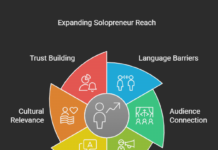Many business owners have spent time away from their business over the last several months to enjoy a warmer climate and take a break from their day-to-day routine. But as we discuss the importance of transition planning, business owners tend to invest more time in planning for a trip than planning for their business’ transition. Why is this? The short answer is that it is easier for owners to focus on the “here and now” than to plan for future changes to their organization. It is important to address the need and the benefits for structured and intentional transition planning to prepare for the next phase in life. In fact, less than 15 percent of business owners have a written and communicated plan for their business transition, even though more than half of them plan to transition in the next three to five years. How do they begin?
Because this is a major life event for many business owners, it is critical to have a solid plan in place to ensure the business and the people thrive post-transition. Developing this plan takes time, and an optimum outcome involves assistance from experts in business transitions. A business transition involves multiple steps and covers three major segments: transfer motives, transfer channels and transfer methods.
For transfer motives, the business owner must first understand their personal and business goals, as these will determine the direction of the other segments. There are several aspects of transfer motives, including short-term strategic thinking (next two to five years). Owners should also consider the level of their continued involvement with the business, their view of their business legacy, areas of interest outside the business, and the financial realities after the transition of the business. Considerations also include the impact on the organization, employees, customers, suppliers and families. The timeframe involved in the transition often dictates the options that are available and the consideration of “the life after” is a key to success for the long-term satisfaction of business owners’ transitions.
Transfer channels are the second segment of a business transition and address whether the business owner would like to transition internally to either family or key employees, or externally via a sale or similar transaction. A critical element of this process that provides baseline information for decisions is the completion of a business assessment. This includes a valuation of the business and evaluates business readiness and attractiveness.
A business valuation reflects the cash flow and risk of the entity and may differ greatly depending on the intention of the owner related to an internal or external transition. Business readiness, which indicates the state of the business, may reflect several things, including the strength of management, the company’s customer base, and documented and transferable processes. Attractiveness is the buyer’s perception of the business’ condition compared to other organizations, and/or the state of operations and profitability related to an internal transition. This overall process is often explained or compared with the sale of a house and the steps that are involved to prepare its sale – your personal perception of the home’s value and readiness and that of potential buyers and property assessors are often not the same.
Transfer methods are the steps taken once the channel has been identified and are relevant regardless of which channel is selected. The timeframe and preparation for the transition are primary drivers of the tasks in this phase. A shorter timeline limits the ability to implement value enhancement items and narrows the scope and time involved in completing critical tasks for the transition. A longer runway allows time to develop effective leaders, document and implement systems and procedures, and to work a strategic plan to increase value. A current and relevant buy/sell agreement, communication regarding the transition, a review of tax implications, an analysis of a gap in transfer value and personal assets for life after transition, and options for financing alternatives are all a part of this phase.
As indicated above, communication and a focus on value are key in any transition and especially impactful in the early stages. While there is not a perfect time to inform others of the intended transition, a plan should be developed and aligned with the transition timeline. Key stakeholders are often informed at the start of the planning process, where employees, suppliers and customers are often brought in once the plan has been confirmed and initiated to minimize the ripple effect and avoid the sharing of inaccurate information. This may often include the offering of specific benefits provided to employees to remain engaged throughout the process. However, regardless of the who and when, it is important to connect with everyone directly and follow up throughout the transition.
Business owners put extensive effort into running their business. When they take the time to plan for their future, they create control of the timing, options and method of their transition. A strong plan and the help of experienced professionals will navigate owners and stakeholders through the maze of difficult decisions and will optimize their chosen outcome. The result is a business that captures value for the successor owners(s) and creates the opportunity for transitioning owners to be well prepared for their next chapter.
Find a Home-Based Business to Start-Up >>> Hundreds of Business Listings.

















































